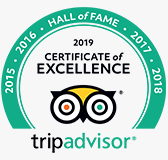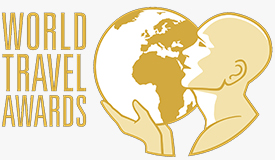Why Travel to Philippines
There's no need for one to be convinced to travel to the Philippines, but if you're hesitating, here are some reasons why you should go: idyllic islands, spectacular mountains, emerald rice terraces, teeming mega-cities, unaffected Filipinos, etc. The Philippines has all that and much more. You can see the fusion of past and present in Manila, scale the volcanic landscapes in Tagaytay, dive into the crystalline waters at islands of Palawan, Boracay, Cebu, Bohol or Dumaguete, and trek through the emerald mountains and rice terraces in Sagada and Banaue. Start to plan your Philippines journey with us now.
Most Popular Philippines Private Tours
Packed with the top highlights of the Philippines, our well-selected tours below will give you some inspiration for your journey. Pick one of the ready-made itineraries to start, or contact our travel expert to tailor one for you.
Southeast Asia Private Tours Including the Philippines
Considering extending your Philippines tour into other irresistible countries of Southeast Asia? Look through some of our recommended itineraries listed below. Tailor-made service is available.
What Our Clients Say About Us
Why Private Tour?
-
 Design for You, Decide by YouA private tour is exclusively made for you and your party. You can include all of the sights and activities that you want to see and do, as well as the duration of time you want to spend on each item. You no longer need to worry about not knowing the destinations; just tell us what you have in mind, and our local experts will take care of the rest. Start your journey with a perfect trip plan that incorporates all of your interests!
Design for You, Decide by YouA private tour is exclusively made for you and your party. You can include all of the sights and activities that you want to see and do, as well as the duration of time you want to spend on each item. You no longer need to worry about not knowing the destinations; just tell us what you have in mind, and our local experts will take care of the rest. Start your journey with a perfect trip plan that incorporates all of your interests! - Hand-Picked Hotels & MealsWhen away from home, where you eat and stay are also two important factors for a wonderful trip. With a private journey, you get to choose where to stay; from little-known hideaways to five-star luxury accommodations. Restaurant choices will also be arranged based on your tastes and dietary preferences. If you're interested in trying some of the regional cuisines, we'd be happy to recommend some of the iconic ones for you too.
- A Once-in-a-Lifetime TripThere is no reason why one should travel, but one will travel for some reason. Whether you're going to celebrate an anniversary, embark on a romantic honeymoon, pay a visit to an old friend, rest and recover, or simply explore a new part of the world. Your travel goals and the destinations can be expertly incorporated into a well-crafted private tour, giving you an experience that is second to none.
Top Places to Visit in the Philippines

-
 BOHOL ISLANDThough famous for its exotic beaches, the island of Bohol has much more to offer. The Chocolate Hills, which are normally covered with green grass but turn chocolate brown during the dry season, and the Sanctuary of Tarsiers (Tarsius Syrichtius), the smallest primate in the world, are the most recommended places to visit.
BOHOL ISLANDThough famous for its exotic beaches, the island of Bohol has much more to offer. The Chocolate Hills, which are normally covered with green grass but turn chocolate brown during the dry season, and the Sanctuary of Tarsiers (Tarsius Syrichtius), the smallest primate in the world, are the most recommended places to visit. -
 BORACAYBoracay, a small island in the central Philippines, is renowned for its beautiful beaches and luxurious resorts. White Beach is the most popular attraction in this area. From taking leisurely strolls to admire the idyllic ocean view, to cruising on the sea for a luxurious experience, to swimming in the pristine blue water, there is so much to do here to satisfy a traveler's wanderlust.
BORACAYBoracay, a small island in the central Philippines, is renowned for its beautiful beaches and luxurious resorts. White Beach is the most popular attraction in this area. From taking leisurely strolls to admire the idyllic ocean view, to cruising on the sea for a luxurious experience, to swimming in the pristine blue water, there is so much to do here to satisfy a traveler's wanderlust. -
 MANILAManila, the fascinating capital city with Spanish colonial architecture and modern skyscrapers coexisting, is a must-visit if you want to gain a quick understanding of the culture and history of the Philippines. Old Manila, the baroque San Agustin Church from the 16th century, and Fort Santiago are the top attractions here.
MANILAManila, the fascinating capital city with Spanish colonial architecture and modern skyscrapers coexisting, is a must-visit if you want to gain a quick understanding of the culture and history of the Philippines. Old Manila, the baroque San Agustin Church from the 16th century, and Fort Santiago are the top attractions here. -
 TAGAYTAYTagaytay should be considered by those looking for something other than beaches in the Philippines. This town is small in size but rich in breathtaking scenery, and it is famous as the gateway to the Taal Volcano Island, an active volcano surrounded by the beautiful Taal Lake.
TAGAYTAYTagaytay should be considered by those looking for something other than beaches in the Philippines. This town is small in size but rich in breathtaking scenery, and it is famous as the gateway to the Taal Volcano Island, an active volcano surrounded by the beautiful Taal Lake.























